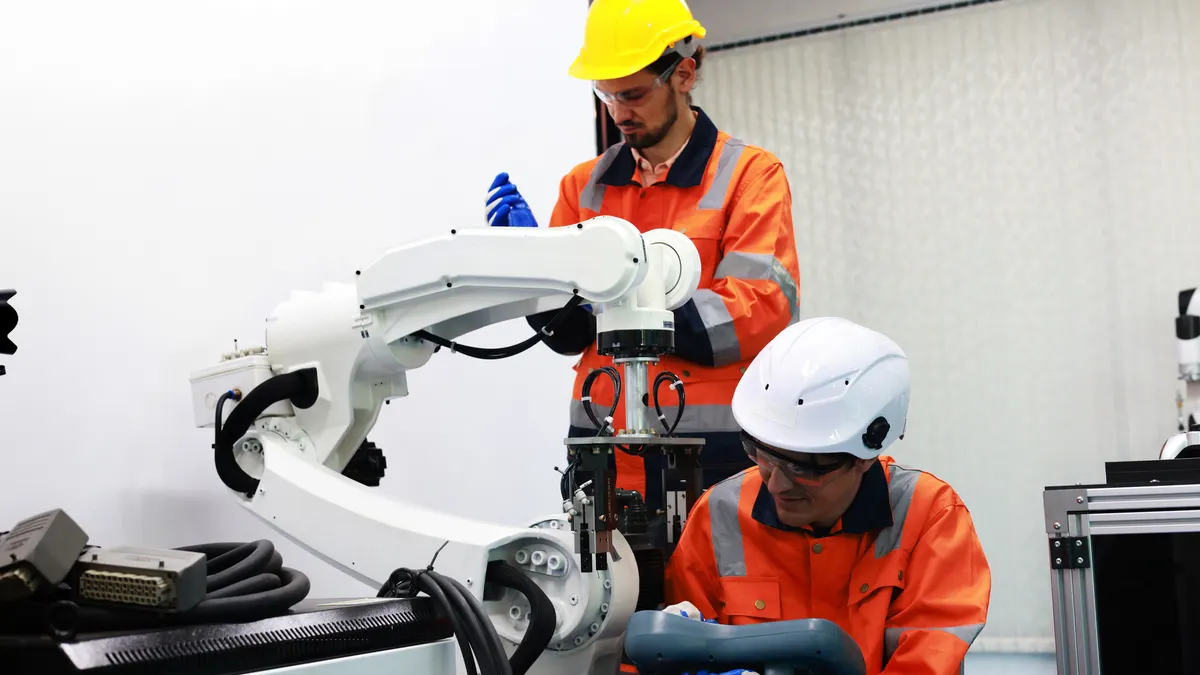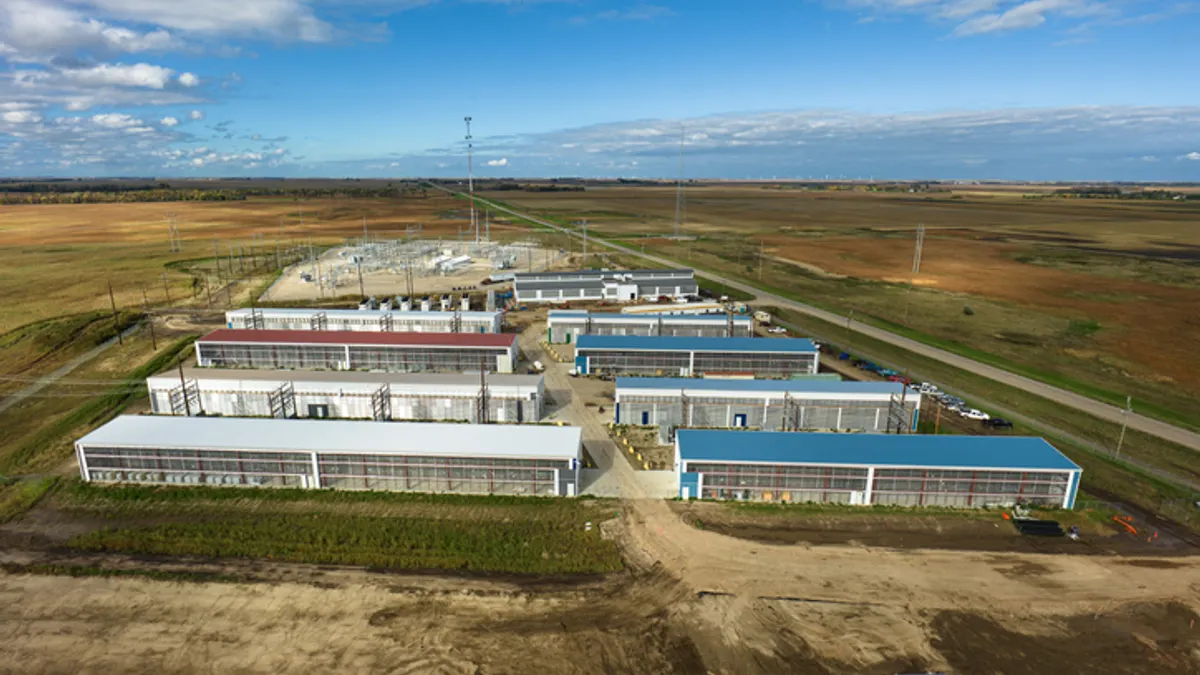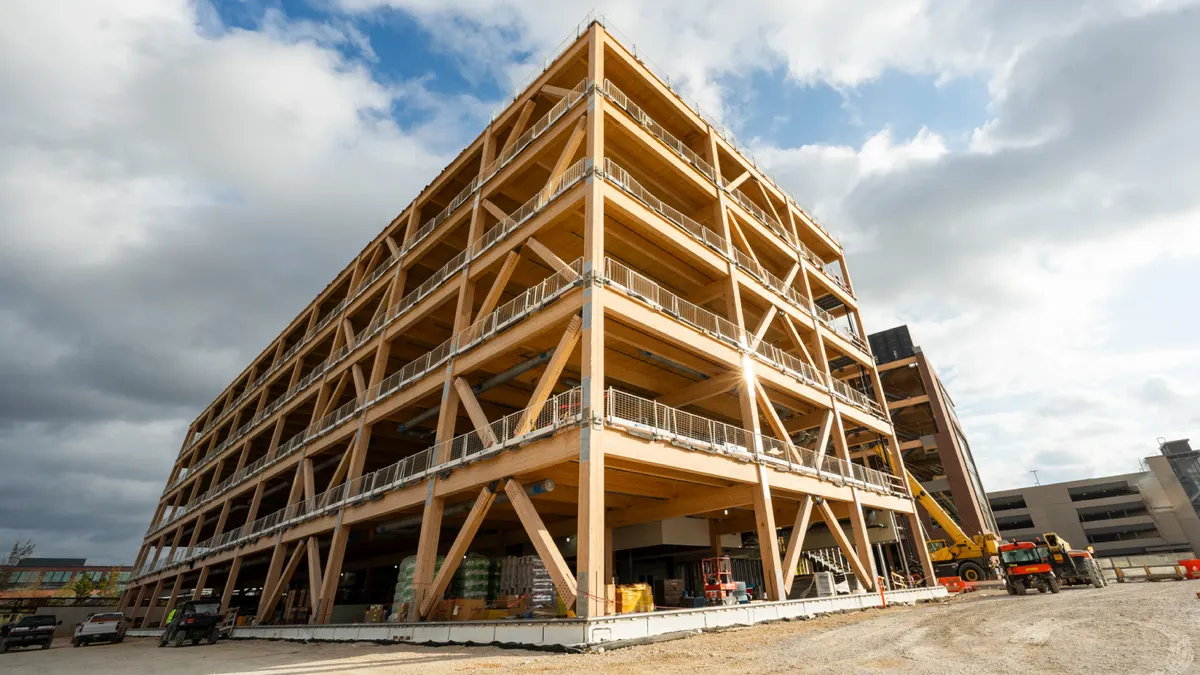CHICAGO — By its nature, technology “aggressively seeks out inconveniences,” said Bill Wagner of Penta Technologies at the AGC IT Conference here yesterday. And where there is a solution to an inconvenience or inefficiency that results in better productivity and profitability, there are plenty of people with money to throw at it for the inevitable payoffs it will bring, he said.
Construction is complex, from planning to last-mile services, resulting in some of the most frustrating inconveniences of any industry, the vice president of product continued. It’s no wonder that technology targets construction-specific solutions, and that effortlessly, the money follows. “Money loves a technological disruptor,” he said.
That’s why firms like Autodesk and Trimble transact multimillion deals to swallow up firms like PlanGrid and e-Builder, respectively, and why venture investors pump billions of dollars into contech every year. When these startups and solutions providers attract the eye of investors, their resulting valuation aligns more with the wonders they promise to bring to clients in the next three to five years than the actual figures in their earnings report.
Take Katerra, for example. As a tech-driven construction company, it’s first and foremost a builder, not a software firm. Yet it’s one of the industry’s primary darlings for tech-centric investors. It’s valued at $4 billion — more than twice its trailing 12-month revenue, because it hints at a panacea for the long-standing problem of industry inefficiency.
“Your construction company is worth more if it’s embracing tech because it gives you a great story to tell to all these people who want to throw money at the productivity problem in construction,” Wagner said.
The solutions are out there, he added, citing the thousands of software and hardware products that promise to boost contractors’ bottom line.
Interact before you implement
But just because they’re there or just because you can build them, he said, doesn’t mean you should shove them onto your workforce, and it doesn’t mean you’re likely to succeed with that endeavor even if you try.
Wagner is a big proponent of construction companies adopting tech solutions — if they do it the right way. That said, he noted that companies can often fail in their rush to “chase shiny objects.”
Representatives from Rosendin Electric’s IT and BIM teams echoed that sentiment with examples of trying — and failing — to swiftly implement enterprise tech solutions across the many moving parts of what’s arguably the country’s largest subcontracting force.
After the end of a five-year journey of rolling out AboutTime field time tracking software, for example, Matt Lamb, Rosendin’s IT director of client services, looked back at the trials the IT department faced with 20/20 hindsight: the company rushed in too quickly and too expectantly.
What happened, he said, is that someone at some point said, “We’ve gotta have it, and just like that, threw it into the hands of workers.” That didn’t work out, he laughed. “We didn’t have bottom-up support or top-down support, or any support at all. There was no buy-in, and the workers quickly stopped using it,” he said, despite the investment and best intentions.
Switching from spreadsheets to iPads was a big enough change on its own, he pointed out, noting that training on that technology, or an iPad 101, should have proceeded the more involved software training.
But one of the biggest challenges, he continued, was that the system was not initially integrated into the firm’s many programs, so users were dumping data back and forth manually, just to try to use a tool that was supposed to streamline tasks.
Lamb and his team had to go back to the drawing board to work out integrations first. It built an interface in Oracle, so employee info, task codes and project data all started flowing seamlessly into the company’s existing data infrastructure.
But there were still pockets of resistance among the thousands of users spread across the country.
Lamb’s solution? “We had to get people in the field selling to other people in the field,” he said. “Instead of pushing the technology on large groups of workers at a time, we got superintendents and foreman involved first. Once they were on board after a few days of education and coaching, they became the sales team. The field sells to the field.”
Wagner said the same thing in his presentation, though in different terms. It’s all about putting “boots on the ground, watching people in the field work and identifying pain points,” he said, recalling a colleague who had been in the IT department working on solutions for 15 years without having ever stepping foot on a jobsite.
Once Rosendin got the guys in charge hooked, and started meeting people in various departments and in various markets with specific, in-person training, it was a matter of about 3 months for usage to start spreading across the country, with about 95% of the company using the technology on a daily basis.
“We developed cadence and rhythm, one region at a time,” Lamb said.
Just six months after that, employees were coming to the IT department with requests, asking where AboutTime was on this job or that, and asking for more solutions to supplement or add to the new tools, he said.
Though some stakeholders “fought tooth and nail on the implementation,” Lamb noted that his team remained persistent and steady throughout to realize the benefits the tool promised.
Measure what matters
“There were a lot of fancy ROIs associated with the tool upon its original implementation,” Lamb said, “but eventually, we narrowed it down to several key metrics, such as the number of paychecks we had to cut due to mistakes being significantly reduced compared to the traditional method,” and the stats started speaking for themselves, further enhancing buy-in from executive teams and the company overall.
“As IT professionals and construction technologists, it’s in our culture to be innovative, but that doesn’t mean adoption is a given,” said Fred Meeske, Rosendin’s corporate director of BIM services, who was presenting with Lamb.
Meeske recalled an approximately five-year-long process of trying to implement a prefab configurator product his team built to address gaps in modeling software for prefabricated assemblies among the various BIM tools the company used in different departments and markets. What he thought was a perfect tool based on feedback and numerous iterations ended up being another expensive tool that nobody used.
What’s often overlooked in the implementation of new technology in such an old-school industry such as construction, he added, is the emotional aspect that such seemingly drastic change can bring.
“When implementing complex technology, things always get screwed up. Be open about that. Be transparent... You’ll gain a lot more trust.

Bill Wagner
Vice president of product, Penta Technologies
People on the information side of the business often forget how long some of the field workers have been doing something a certain way. “IT and BIM people are used to working on the basis of process and procedures,” he said, “but field workers are not. To get them to succeed, it’s all about the human element. You have to get people to engage and appeal to their groups.”
Meeske echoed a trend prominent in the industry in recent years — that of finding and supporting tech champions on particular teams of stakeholders. “Once you see that some people are really into it, you bring them in, train them, and then they go out and train the field, they become a conduit for deploying tech on a project. They become the support mechanism for each of the teams.”
For example, he continued, “We’ve got videos and documentation posted, but no one really engages with those on their own. Yet if you put someone [those workers] respect on a plane and in person to show one team at a time, [support] then gets bigger and bigger” and grows exponentially.
For that reason, Wagner said in his presentation, transparency is key. “When implementing complex technology, things always get screwed up,” he confessed. “Be open about that. Be transparent as an IT person that things won’t always go as planned, and allow yourself to be vulnerable. You’ll gain a lot more trust. The key is to communicate, communicate, communicate."






















